When I wandered through Bamberg’s old town, it honestly felt like I’d stepped into a storybook. The cobblestone streets twist past rows of colorful half-timbered houses, and the river’s gentle sounds echo along the banks.
After exploring those medieval lanes and soaking up the postcard-worthy river views, I can’t help but think Bamberg might just be Germany’s most beautiful small town.
The charm here goes way beyond good looks. Bamberg’s relaxed vibe and the little surprises around every corner—like ancient breweries and tucked-away bridges—make it special. Since it’s more compact than bigger German cities, I could just wander on foot, getting lost and found among historic sights without much effort.
If you want a place to dive into history, admire quirky architecture, and just chill by the river, Bamberg might win you over too.

First Impressions of Bamberg’s Medieval Charm
Arriving in Bamberg, I felt like I’d landed in another era. Every street seemed packed with stories from centuries past.
From the detailed stonework in the Altstadt to the calm flow of the River Regnitz, the town wears its history on its sleeve. There’s something a bit magical about it all.
Strolling Through the Altstadt
My first steps in Bamberg’s Altstadt made it clear why this area gets so much love in northern Bavaria and Franconia. Cobbled lanes wind between timber-framed houses—some leaning, all bursting with character.
I found myself drawn to the medieval buildings, their facades looking almost untouched by time.
Getting lost here? That’s kind of the point. I stumbled on hidden alleys and cozy little squares that invite you to slow down. Ancient storefronts now house small shops and cafés, with windows full of handmade chocolates and Franconian crafts.
It really seemed like every building had a story to tell. Thanks to its UNESCO World Heritage status, much of the old town stays preserved, so you get a real sense of traveling back in time.
The quiet charm and tidy streets offer a peaceful escape from the usual city buzz. I felt more connected to the city’s past than I expected.
Quick tip: Seriously, wear comfy shoes—those cobblestones can be rough on your feet!
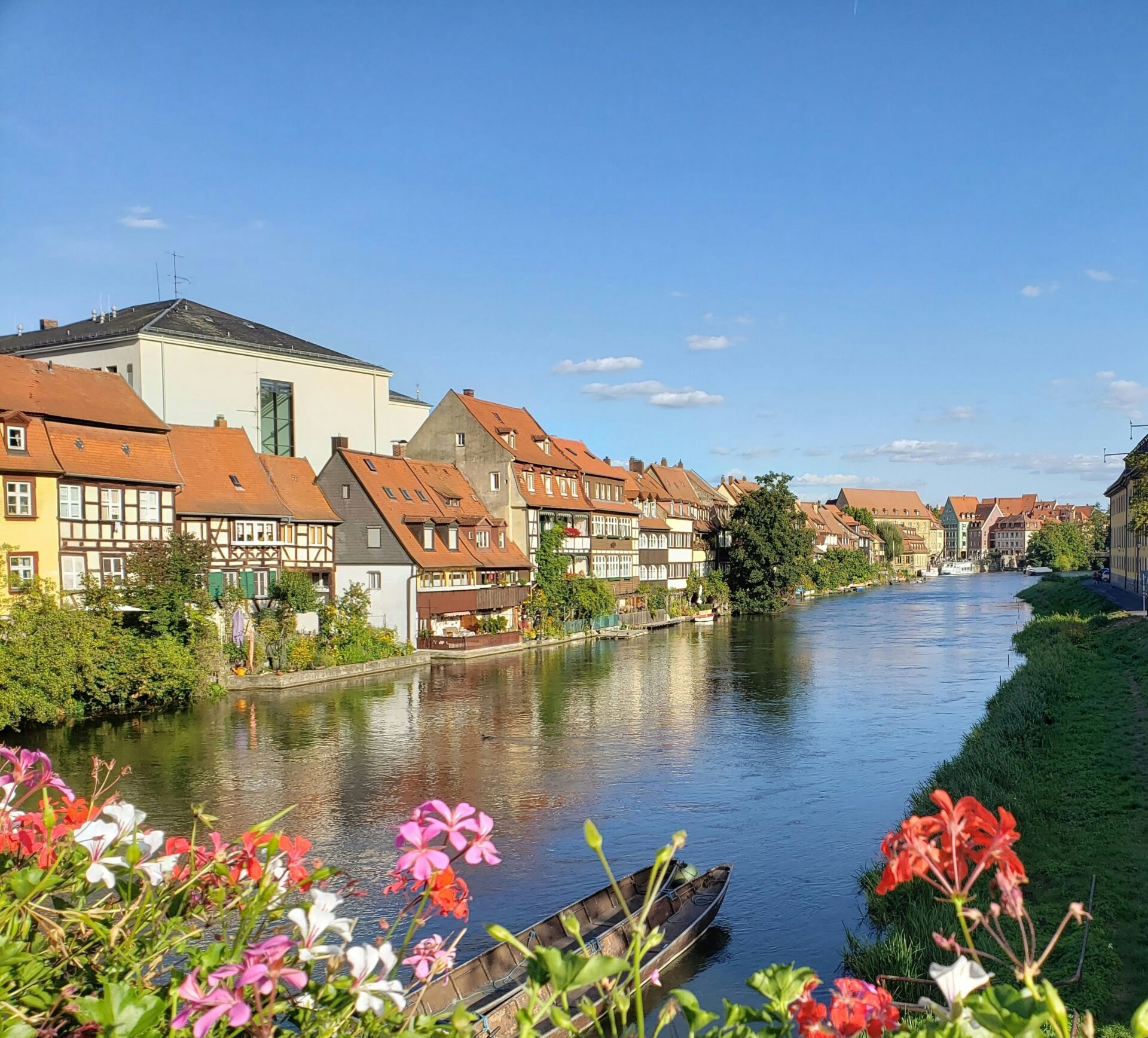
Atmosphere Along the River Regnitz
The River Regnitz gives Bamberg so much of its appeal. Walking along the banks felt like a break from the tight Altstadt streets.
Classic Bamberg houses seem to hover right over the water, their colors reflecting below. People call this “Little Venice,” and honestly, it fits.
With boat houses, a slow-moving current, and flower boxes spilling over balconies, the vibe is super chill. I grabbed a bench and watched locals bike by while ducks drifted along.
The river brings fresh air and a soft soundtrack to the city. It helps set that relaxed pace Bamberg is known for.
Highlights along the Regnitz:
- Views of historic bridges like the Altes Rathaus
- Quiet spots under willows and flowers
- Photo ops that really show off Bamberg’s peaceful side
This riverside atmosphere, mixed with all the history, makes every visit stick in your memory. I found myself slowing down, tuning into Bamberg’s rhythm—a rare thing in busy tourist towns.
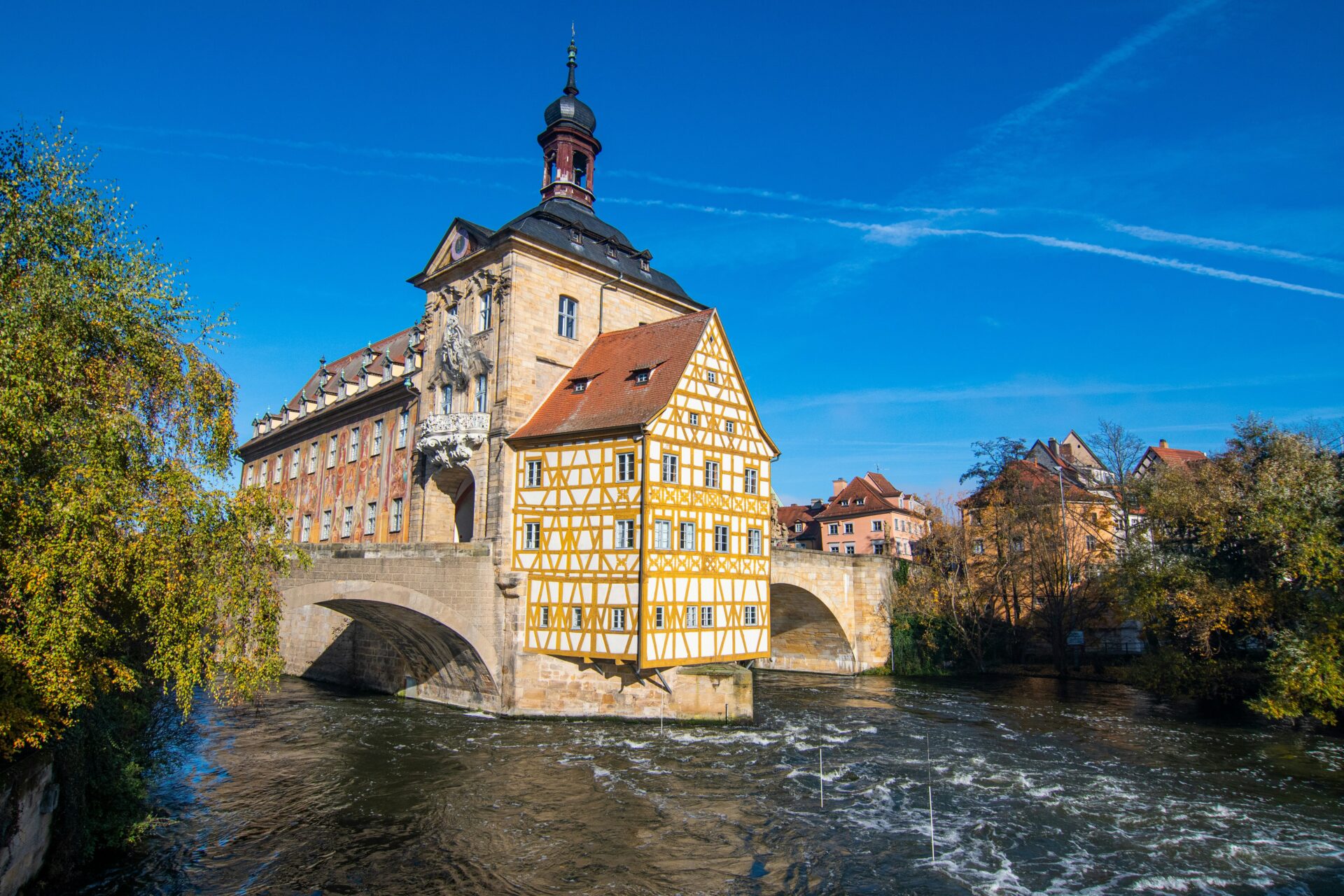
Architectural Gems and UNESCO Recognition
Walking through Bamberg, I felt like I’d landed in a real-life museum. The mix of medieval architecture and that UNESCO World Heritage status creates a strong sense of history and beauty everywhere you look.
Exploring the Old Town Hall Over the Water
The Old Town Hall (Altes Rathaus) caught my eye right away. It sits right in the middle of the Regnitz River, perched on a tiny island.
That location alone makes it unforgettable—kind of like it’s floating between two worlds.
To reach the Old Town Hall, you cross elegant stone bridges. The outside bursts with bright frescoes that show off Bamberg’s pride. There’s a playful mix of half-timbered design and bold colors that make it pop, even among all the other old buildings.
Inside, a museum tells Bamberg’s story and shows off porcelain collections. But honestly, the best part for me was standing on the bridge, camera in hand, just soaking in the view of the town hall reflected in the water.
It’s no wonder this spot became a symbol of Bamberg—and a must-see for anyone exploring the city.
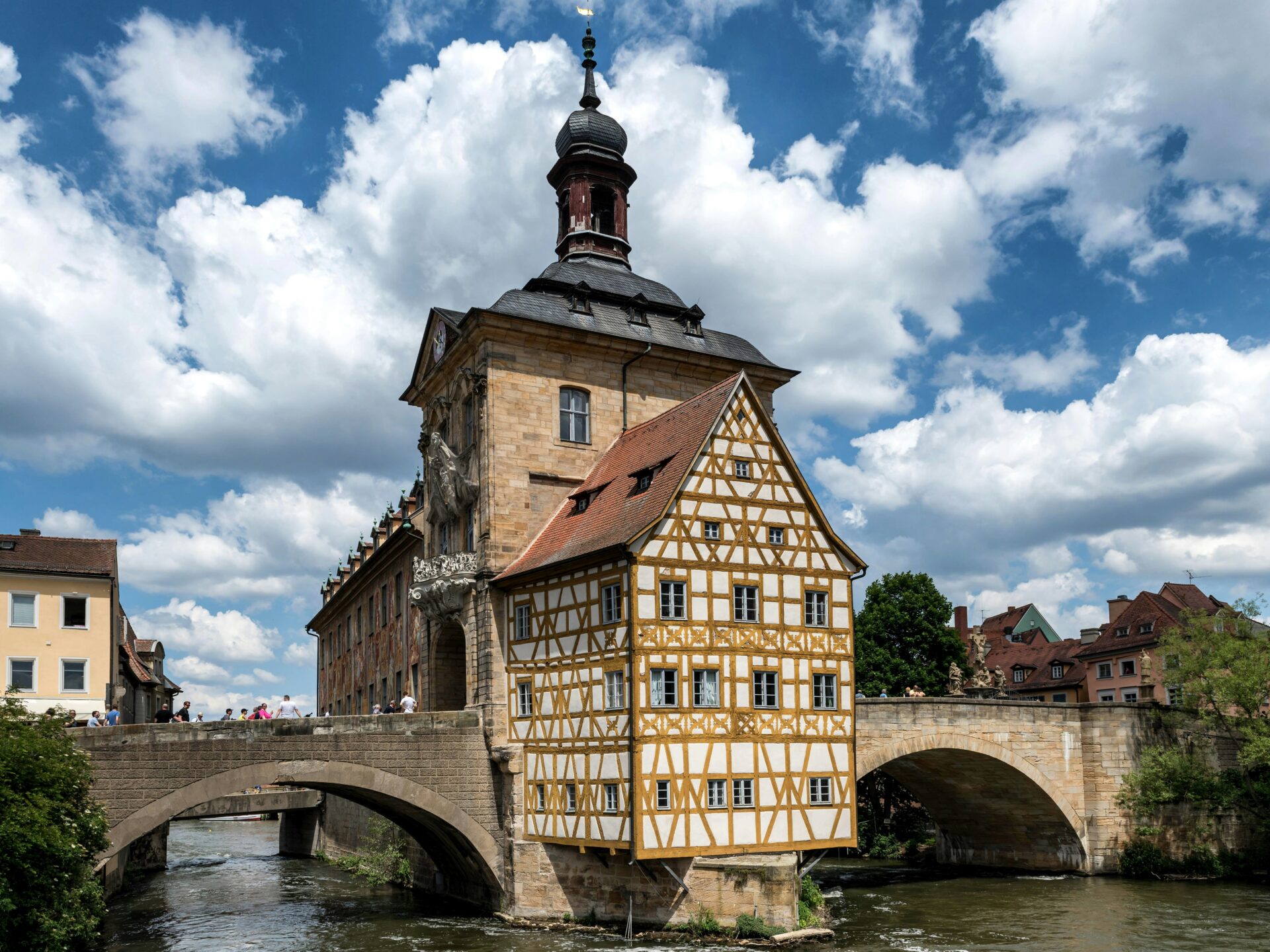
Discovering Bamberg Cathedral
Not far from the Old Town Hall, Bamberg Cathedral towers over the town with its tall spires and grand face. This Romanesque-Gothic church goes back to the 11th century.
Its thick stone walls seem to hold a thousand years of stories. When I stepped inside, the hush and soft light really impressed me.
The cathedral’s famous for the Bamberger Reiter (Bamberg Horseman), a medieval statue that draws visitors from all over. Marble tombs and graceful arches add to the sense of importance in there.
Bamberg Cathedral isn’t just a relic—it’s a real symbol of the city’s spiritual and cultural roots. Every detail, from the carved doors to the layout, shows why Bamberg landed on the UNESCO list.
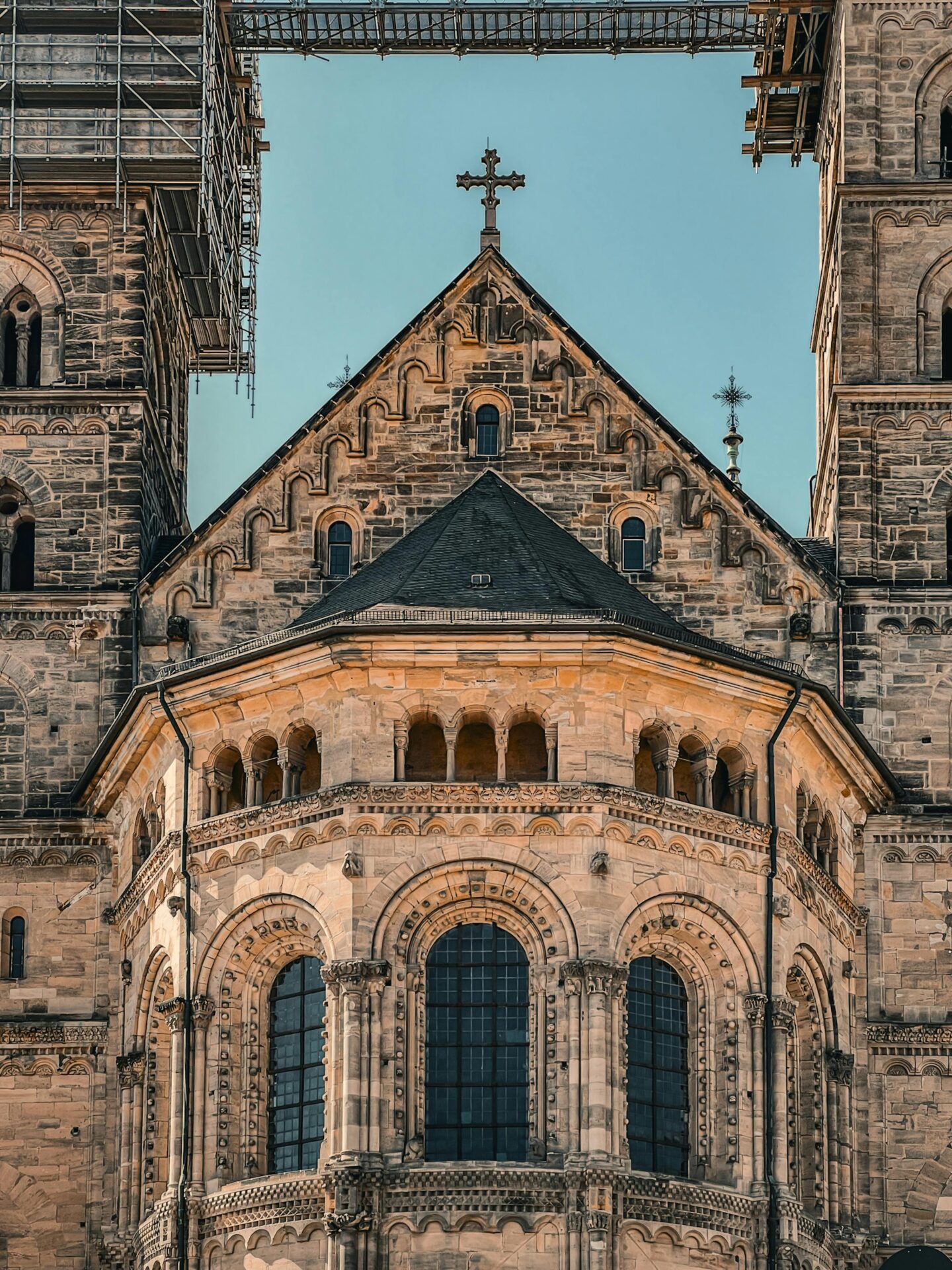
The Allure of the Imperial Castle
Climbing up one of Bamberg’s seven hills, I reached the imperial castle, the Altenburg. From up there, you get sweeping views over the red roofs and winding river.
The walk up is a bit steep, but the scenery makes it worth it. Altenburg dates all the way back to the Middle Ages.
Thick stone walls and a sturdy tower hint at its old defensive job. These days, it feels more like a peaceful lookout than a fortress.
Inside the courtyard, I found a cozy restaurant—perfect for a drink or snack after the climb.
If you want to dig into Bamberg’s history beyond the town center, the imperial castle is a must. It’s just one more layer of history in this UNESCO city.
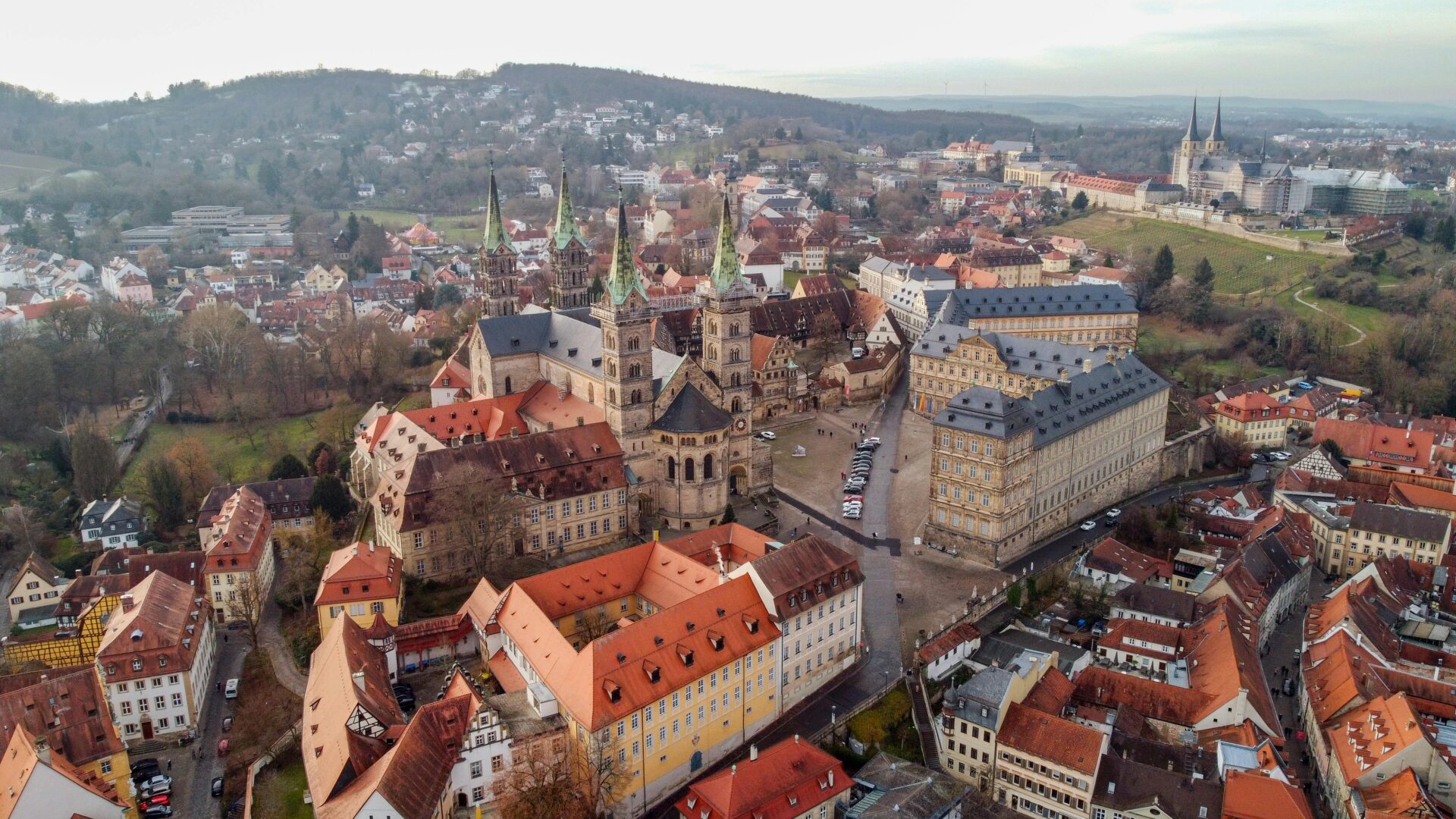
Local Traditions, Flavors, and Rauchbier Culture
Bamberg’s food and drink scene totally surprised me. I’d never had smoky beer before, or tucked into Franconian dishes that felt both old-school and fresh.
Sampling Rauchbier in Historic Taverns
Trying Rauchbier—a smoked beer that’s pure Bamberg—was a highlight. I got my first taste at Schlenkerla, a centuries-old tavern packed with locals and travelers.
Walking in, I noticed the dark wood and candle-lit hall. The smell of smoked malt hit me fast.
Rauchbier (“rowkh-beer”) is strong stuff, with an aroma almost like bacon. The taste can divide people, but I warmed up to it after a few sips.
Everyone in the tavern had opinions, and it made starting conversations easy. You realize pretty quickly that Rauchbier is about more than just sipping—it’s about joining Bamberg’s beer tradition.
Other historic breweries like Spezial and Fässla serve up their own versions. Most keep to old recipes, so Franconia’s brewing heritage feels very much alive.
I didn’t expect to find such a world of local craftsmanship in every glass.

Culinary Traditions Unique to Bamberg
Beyond the beer, Bamberg’s food traditions left a big impression. Franconian cuisine is rustic and hearty—think Schäuferla (roast pork shoulder with crispy skin), dumplings, and tangy sauerkraut.
I ended up in plenty of cozy “Wirtshäuser” for filling meals after long river walks.
I noticed straight away how well the local dishes pair with Rauchbier. Rich food and smoky beer are a match made in heaven.
In summer, I joined families at beer gardens where pretzels, Obatzda cheese, and cold meats turned snack time into something special.
Menus change with the seasons—spring brings asparagus, autumn means wild mushrooms, and there’s always pickled veggies and hearty bread.
Eating out felt personal here. Many places are family-run, with recipes passed down for generations. Every meal felt like a little taste of home, even if you’re just visiting.
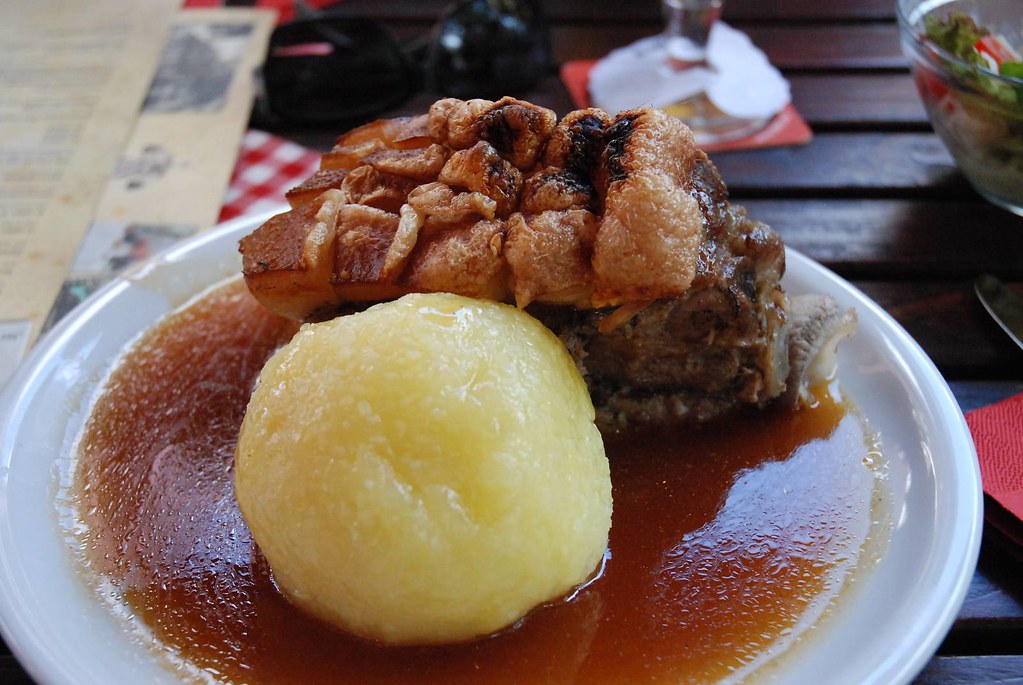
How Bamberg Compares to Other Small Towns
Bamberg’s charm stands out, even compared to Germany’s other famous medieval towns. The river views, timber-framed houses, and that lived-in atmosphere make it easy to see why some travelers pick it over bigger names.
Nuremberg Versus Bamberg
When I visited Nuremberg, I noticed how much bigger and busier it felt. Both cities are packed with history, but Nuremberg’s scale and crowds give it a more touristy vibe.
Its medieval old town is impressive, with landmarks like the castle and city walls. But sometimes it felt more like a sightseeing stop than a place to linger.
Bamberg, on the other hand, is quieter and more relaxed. Locals go about their lives in the cobbled lanes and breweries, and it’s easy to blend in.
I loved watching students hang out by the river, and the lack of big crowds made every stroll feel personal.
Here’s a quick comparison:
| Feature | Bamberg | Nuremberg |
|---|---|---|
| Atmosphere | Relaxed, local, authentic | Lively, larger, touristy |
| Architecture | Medieval, lots of timber homes | Grand, fortified |
| Crowds | Fewer tourists | More crowded |

Day Trips to Regensburg
Regensburg has a lot in common with Bamberg—both have UNESCO old towns with pastel buildings and winding lanes. What really stood out in Regensburg was the strong Roman influence.
Stone bridges and ancient gates give it a different historical flavor. Regensburg’s riverfront is especially lively in the evenings, with lots of busy cafés.
I found sights like St. Peter’s Cathedral and the Old Stone Bridge stunning, but the overall feeling was more vibrant and bustling.
Bamberg felt calmer and more intimate. Regensburg is great if you want a lively day by the Danube.
Some highlights from Regensburg:
- Regensburg’s Stone Bridge: Awesome at sunset
- Pastel-colored squares: Perfect for people-watching
- Roman relics: Offer a different slice of history than Bamberg
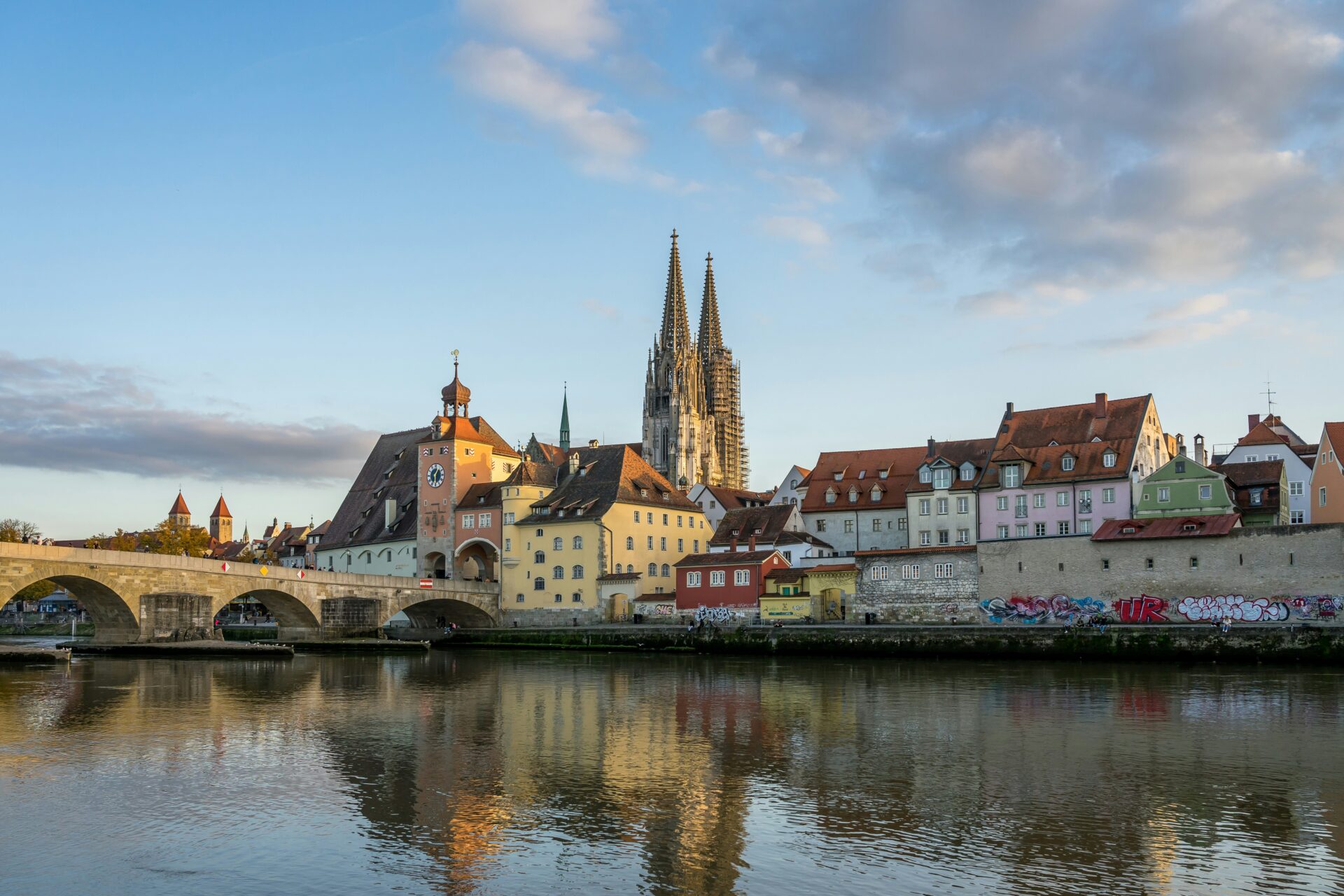
Medieval Vibes Between Bamberg and Prague
Traveling between Bamberg and Prague, I kept comparing their medieval spirit. Prague is much bigger, and its cobbled alleys are always buzzing.
The architecture in Prague is over-the-top: Gothic towers, baroque squares, and that famous Charles Bridge. It’s a lot to take in.
Bamberg feels more peaceful and easygoing. The winding lanes are less crowded, so I could explore at my own pace.
The Old Town Hall on the Regnitz River isn’t as grand as Prague’s big sights, but it has a fairytale vibe that’s hard to forget.
Both cities share river views and a historic mood. But if you want to slow down, sip smoky Bamberg beer, and hang out with locals, Bamberg sometimes wins out.

Practical Tips for Exploring Bamberg
Navigating Bamberg’s medieval streets and riverside walks—and figuring out the best seasons—really shaped how much I loved this small gem in northern Bavaria.
The city’s charm is easy to soak up, as long as you plan just a little.
Getting Around the City Streets
Bamberg’s Altstadt (Old Town) feels like something out of a storybook. Cobblestone lanes twist past timbered houses, and bridges cross over narrow canals.
I honestly think walking is the way to go. On foot, you’ll stumble across little historic details—like the old Rathaus perched right on its own island.
Tip: Definitely wear comfortable shoes. The streets can get pretty uneven and sometimes a bit steep.
You could try a bicycle, but honestly, some spots are tricky—especially in those compact medieval corners.
Public buses reach the outskirts, but you probably won’t need them in the center. The main sights, like Bamberg Cathedral and Little Venice, sit just a short stroll from each other.
Here’s a quick table for reference:
| Getting Around | Details |
|---|---|
| Walking | Best in Old Town, everywhere |
| Bicycles | Somewhat tricky, steep areas |
| Public transport | Useful for outer neighborhoods |
| Car | Not recommended; parking limited |

River Walks and Viewpoints
The Regnitz River cuts right through Bamberg, and its banks are just lovely. I wandered along the Wasserstraße and found the row of fishermen’s houses—locals call it “Little Venice.”
Those riverside paths? Totally worth it, especially early in the morning when everything feels peaceful.
I found one of my favorite photo spots from the bridge next to the Altes Rathaus. The view over the water, with the old town hall rising above, is just classic Bamberg.
If you want a panoramic view, head up to Michelsberg. From there, you get a fantastic look over the city and the river.
Evenings by the river have their own magic. The buildings light up, the town gets quieter, and it’s the perfect time to find a bench and watch the sunset.
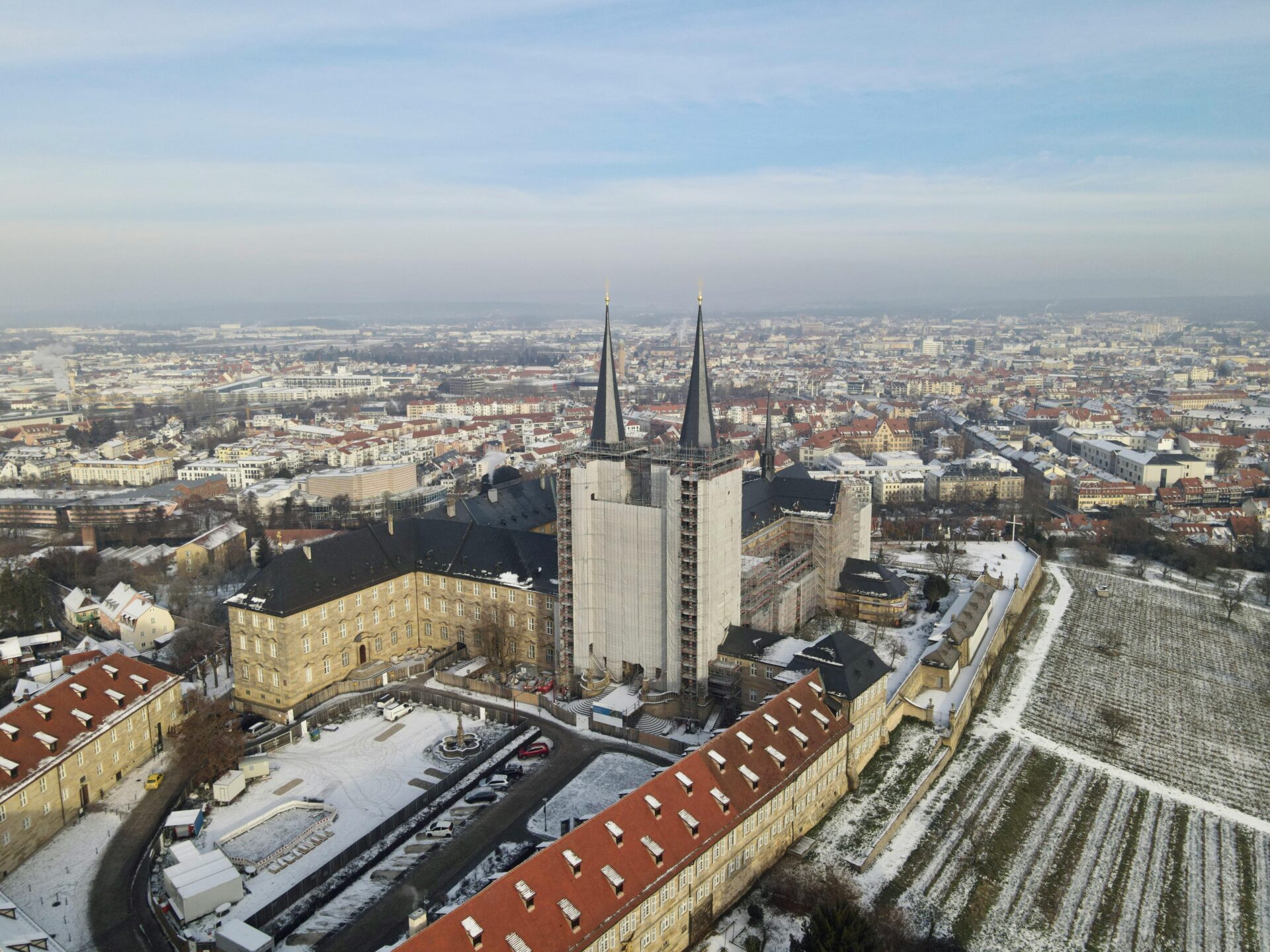
Best Times to Visit
Bamberg really comes alive from late spring through early autumn. In June and July, flowers burst everywhere and the weather’s just right for wandering around.
Of course, that’s also when the Altstadt gets packed. I visited in late spring—honestly, it felt lively but not too crowded.
Winters feel much quieter, and the Christmas markets add a cozy, local vibe. If you’re into smaller crowds and don’t mind chilly air, try fall or early spring.
Tip: Always check the local event calendars before you book. Festivals like Sandkerwa in August bring tons of excitement, but hotel prices shoot up. For a peaceful stroll, I’d go early in the morning or on a weekday.

